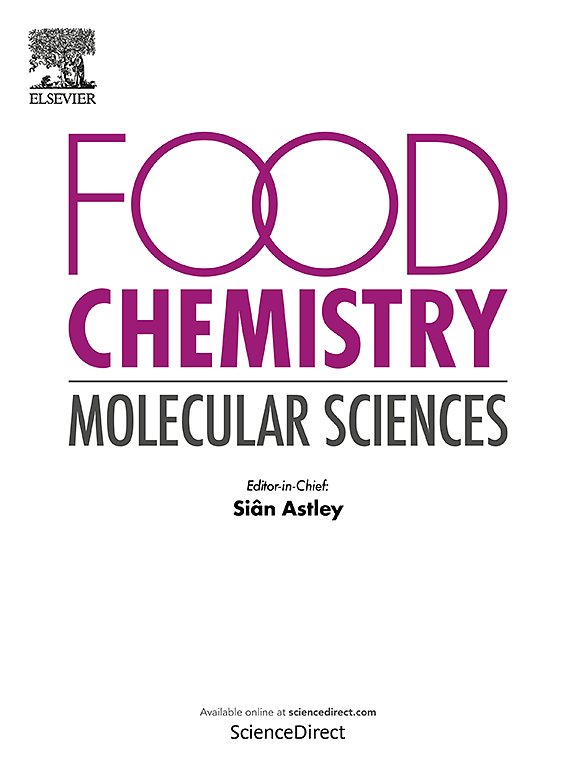Novel SCAR markers for accurate diagnosis of toxic Chlorophyllum molybdites and C. globosum
IF 4.1
Q2 FOOD SCIENCE & TECHNOLOGY
引用次数: 0
Abstract
Toxic Chlorophyllum molybdites and C. globosum are mistaken for wild edible mushroom species under the same genus, and those under Macrolepiota. These species have similar morphological characteristics and occupy the same ecosystems. Accidental ingestion of C. molybdites and C. globosum can lead to gastrointestinal syndromes including nausea, vomiting, and diarrhea. In severe cases, clinical manifestations, such as dehydration, bloody stools, and profuse sweating, may occur. Given that diagnostic characteristics of poisonous mushrooms are inadequate, the use of molecular techniques is needed. In this study, we developed specific SCAR markers for toxic C. molybdites and C. globosum and used to simultaneously distinguish these toxic species via multiplex PCR. Thirty-five Chlorophyllum and Macrolepiota mushroom samples were obtained, and phylogenetic analysis of the internal transcribed spacer region confirmed their taxonomic entities. High annealing temperature-random amplified polymorphic DNA profiling of all samples using 30 arbitrary primers resulted in nine distinct fragments of C. molybdites and C. globosum, which were further analyzed using the sequence-characterized amplified region (SCAR) technique. Two SCAR primer sets were selected for the accurate discrimination of C. molybdites and C. globosum with expected sizes of 288 and 183 bp, respectively. In the sensitivity tests, both species-specific SCAR markers were detected at DNA template concentration as low as 3 pg/μL in simplex PCR. The presence of these toxic species was detected at 1 % in cooked mushroom samples. Thus, the developed SCAR markers are ideal for the rapid diagnosis of gastrointestinal irritant mushrooms, which may help minimize the risk of severe foodborne illnesses.

新的SCAR标记准确诊断有毒钼酸绿藻和球藻
毒钼绿吊藻和毒绿吊藻被误认为是同一属的野生食用菌种,而毒绿吊藻和毒绿吊藻则被误认为是大鳞翅目下的野生食用菌种。这些物种具有相似的形态特征,并占据相同的生态系统。意外摄入辉钼矿梭菌和球孢梭菌可导致胃肠道综合征,包括恶心、呕吐和腹泻。严重者可出现脱水、便血、多汗等临床表现。鉴于毒蘑菇的诊断特征是不充分的,需要使用分子技术。在这项研究中,我们开发了有毒钼酸梭菌和C. globosum的特异性SCAR标记,并通过多重PCR同时区分这些有毒物种。获得了35份吊兰和大鳞菇样品,并对其内部转录间隔区进行系统发育分析,确定了它们的分类实体。使用30个任意引物对所有样品进行高退火温度随机扩增多态性DNA分析,得到9个不同的辉钼矿石和C. globosum片段,并使用序列特征扩增区(SCAR)技术对其进行进一步分析。选择了两组SCAR引物,分别对辉钼矿c和球孢c进行了准确的区分,预期大小分别为288 bp和183 bp。在敏感性试验中,单形PCR在低至3 pg/μL的DNA模板浓度下检测到两种物种特异性SCAR标记。在煮熟的蘑菇样品中检测到这些有毒物质的含量为1%。因此,开发的SCAR标记对于胃肠道刺激性蘑菇的快速诊断是理想的,这可能有助于减少严重食源性疾病的风险。
本文章由计算机程序翻译,如有差异,请以英文原文为准。
求助全文
约1分钟内获得全文
求助全文
来源期刊

Food Chemistry Molecular Sciences
Agricultural and Biological Sciences-Food Science
CiteScore
6.00
自引率
0.00%
发文量
83
审稿时长
82 days
期刊介绍:
Food Chemistry: Molecular Sciences is one of three companion journals to the highly respected Food Chemistry.
Food Chemistry: Molecular Sciences is an open access journal publishing research advancing the theory and practice of molecular sciences of foods.
The types of articles considered are original research articles, analytical methods, comprehensive reviews and commentaries.
Topics include:
Molecular sciences relating to major and minor components of food (nutrients and bioactives) and their physiological, sensory, flavour, and microbiological aspects; data must be sufficient to demonstrate relevance to foods and as consumed by humans
Changes in molecular composition or structure in foods occurring or induced during growth, distribution and processing (industrial or domestic) or as a result of human metabolism
Quality, safety, authenticity and traceability of foods and packaging materials
Valorisation of food waste arising from processing and exploitation of by-products
Molecular sciences of additives, contaminants including agro-chemicals, together with their metabolism, food fate and benefit: risk to human health
Novel analytical and computational (bioinformatics) methods related to foods as consumed, nutrients and bioactives, sensory, metabolic fate, and origins of foods. Articles must be concerned with new or novel methods or novel uses and must be applied to real-world samples to demonstrate robustness. Those dealing with significant improvements to existing methods or foods and commodities from different regions, and re-use of existing data will be considered, provided authors can establish sufficient originality.
 求助内容:
求助内容: 应助结果提醒方式:
应助结果提醒方式:


